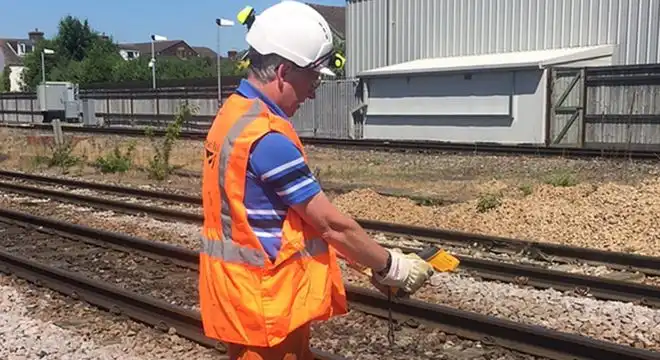In the sweltering summer heat, Yang Guoyu, a railway engineer, together with his colleagues, diligently conducted a series of tasks on a railway in Haining City, located in Zhejiang Province. These tasks included meticulously inspecting the bolts and accurately measuring the track gauge. This arduous process lasted for approximately thirty minutes.
In order to thoroughly do the track inspection, a minimum of three and a half hours will be required. The elevated temperatures seen throughout the summer season have exerted a significant influence on various sectors, including China’s railway system.
During the intense heat of summer, the many elements comprising the railway system experience heightened strain, hence necessitating a more imperative inspection of the tracks.
According to an expert in rail tracks at Yanguan station of Hangzhou-Haining intercity railway, the steel tracks have a tendency to undergo expansion when exposed to exceedingly high temperatures. This expansion can result in the track becoming susceptible to breakage due to the uneven distribution of forces during train operation, leading to severe consequences such as derailment.
The speaker emphasized the necessity of preemptively addressing possible expansion in order to prevent adverse consequences.
On July 26, 2023, a track inspection was conducted in Nanyang, Henan Province, by railway personnel.
On July 26, 2023, a track inspection was conducted by railway personnel in Nanyang, Henan Province.
In addition to the regular track inspections carried out by employees, the utilization of fasteners comprising clips, clamps, and joints is essential for the secure attachment of rails to concrete railway sleepers. The presence of gravel beneath the train tracks has the additional purpose of mitigating shock absorption and buffering impact during train operations.
The engineers incorporated the local temperature conditions into their decision-making process and devised an appropriate strategy for the installation of the rails. This involved allowing sufficient room for expansion of the tracks during high temperatures, as well as implementing a cooling mechanism by means of water application. According to Wang Liwang, a deputy head of a railway section at China Railway Beijing Group, the use of this approach will ensure the stability of the steel rails.
